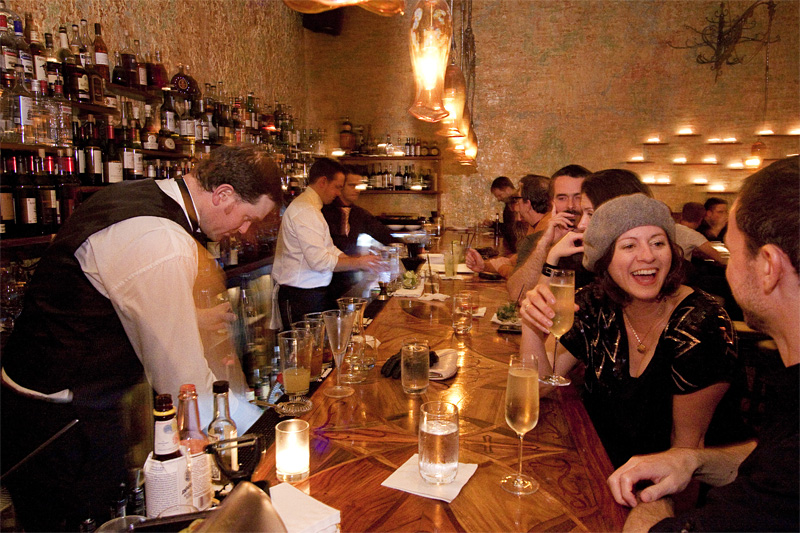I was talking with my editor a few weeks ago about a bistro she’d just visited for the first time. “It was good, basic French food,” she said resignedly. “Not really memorable. At least it wasn’t too expensive.”
How much? I asked. She did the math. Two to three courses per person, plus a bottle of wine, at $50 a head. “Oh, that’s not bad,” I agreed. “For $50, straightforward is just fine.”
Whoa. I caught myself. Did I really believe that?
Having just wrapped up a suite of visits to places that charged an average of $80 a person for a three-course meal—though I was eating on the paper’s dime—I had to ask myself after each: Was the experience worth all that money?
What makes a meal “worth it” doesn’t always correspond to its price. The banh mi that haunts my dreams—a meatball sandwich whose slightly sweet juices mingled with the mayonnaise coating the pickled carrot and daikon strands, the cilantro leaves, and the crisp, warm roll—set me back $2.25. The best steak I have ever eaten, a buttery, spoon-tender 12-ounce Kobe-style New York strip, cost $60, and I didn’t regret a single penny of it.
Yet, what I expect out of a $25 meal, a $50 meal, and a $75 meal are very different. I could quantify my expectations (on a spreadsheet, if you’d like) but suffice it to say that for $25 I’d just like to eat something pleasant with my friends and not be ignored by the server. For $50, I want to feel special—I want to eat food that stimulates my senses, to drink a wine worth contemplating, to feel that my life and the lives of my dining companions are intertwined more closely. For $75, there’d better be a high wow factor, and I’m not talking one great dish out of eight or one pleasant conversation with the host when she seats us. Charging that much money implies that the restaurant is buying the best products and hiring enough staff to make sure that those ingredients are cooked and served beautifully.
Perhaps it’s easier for me to judge what value isn’t. Portion size, for one. Nothing bothers me more than people who judge a restaurant by the volume of food on their plates. “It was a little bitty chunk of foie gras for $15!” they exclaim in disgust. But . . . was it exquisitely prepared? Did it melt on your tongue like a dab of warm butter? Will you remember it next week, or next year? There’s a place for those who calculate value by sheer mass: It’s called Old Country Buffet, and each time I’ve eaten at one I’ve walked out with a stomachache and regrets.
Fanciness is no guarantee of value, either. I’m so thrilled to be dining out in a city that isn’t beholden to the enforced simplicity of Alice Waters and Judy Rodgers, one whose chefs and restaurant owners are eager to play with the idea of what a meal should be. By both training and temperament, though, I respect a perfectly cooked fillet of fish with a squeeze of lemon more than an overcooked one tricked out with three tragic sauces and a carrot carved into a scale model of the Venus de Milo.
Value seems to have something to do with expectations met, whether the meal costs $4 or $80, and with all the other aspects besides food that make a meal wonderful—the way the light flickers against the walls, the flourish with which the waiter presents the menu, the company at the table. I’m still figuring it out. Have you?





